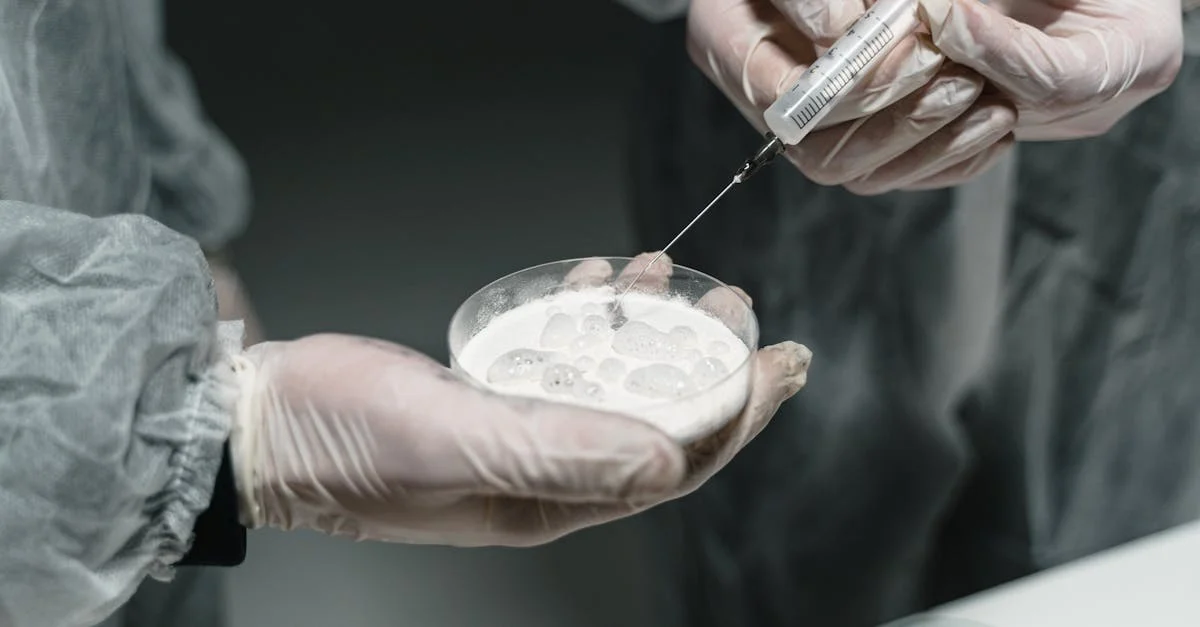What Is the Most Commonly Used Method of Testing the Toxicity of a Chemical? Current Standards Explained
When I think about how chemicals impact our health and environment I realize just how important it is to know whether a substance is toxic. With thousands of new chemicals developed every year scientists need reliable ways to test their safety before these substances reach the public. The right testing method can mean the difference between safe use and unexpected harm.
I’ve noticed that the world of toxicity testing has changed a lot over time. While there are many methods available today one approach stands out as the most widely used. Understanding this method helps me appreciate the science behind chemical safety and why it matters for everyone.
Understanding Chemical Toxicity Testing

I evaluate chemical toxicity with established scientific methods that identify how substances affect living organisms. I focus on two main strategies—in vitro (cell-based) and in vivo (animal-based) testing. In vitro techniques, like cytotoxicity assays and high-throughput screening, use human or animal cells to estimate potential toxic effects. In vivo studies, including acute and chronic toxicity tests, involve live animal models to monitor biological responses after exposure. Both methods produce quantitative and qualitative data that shape regulatory guidelines.
I determine which method to use based on several criteria. I consider the chemical’s properties, intended application, and regulatory requirements from agencies like the EPA or OSHA. Most modern frameworks prefer in vitro testing to reduce animal use, increase speed, and improve scalability, but animal models remain standard for comprehensive risk assessments.
The most common in vitro approach is the Neutral Red Uptake (NRU) assay, which predicts cytotoxicity by measuring cell viability after exposure. Robust datasets from these assays produce widely accepted benchmarks for chemical safety evaluation. In vivo, the LD50 test (median lethal dose) presents acute toxicity results and often serves as a reference point for other assessment methods.
Chemical Toxicity Testing Methods Overview
| Method | Description | Example Use Case | Regulatory Use |
|---|---|---|---|
| In vitro (cell-based) | Uses isolated cells or tissues | NRU, MTT, Ames test | Screening, prioritization |
| In vivo (animal-based) | Uses live animals | LD50, Draize test | Risk assessment |
| Computational (in silico) | Simulates toxicity from chemical structure | QSAR modeling | Preliminary prediction |
Typical Endpoints in Toxicity Testing
| Endpoint | Description | Key Metrics |
|---|---|---|
| Cytotoxicity | Cell viability, growth, function | IC50, cell death % |
| Acute Toxicity | Effects after single exposure | LD50, morbidity |
| Chronic Toxicity | Effects after repeated exposure | NOAEL, LOAEL |
| Genotoxicity | DNA mutation/damage potential | Micronucleus frequency |
Regulatory agencies, including the US EPA and European ECHA, recognize these approaches as reliable for evaluating chemical safety and establishing exposure limits.
What Currently Is the Most Commonly Used Method of Testing the Toxicity of a Chemical?
Most toxicity assessments use established laboratory methods to determine potential health effects. In vivo animal testing remains the predominant standard globally for regulatory toxicology.
Overview of Toxicity Testing Methods
I focus on two main scientific strategies for testing chemical toxicity: in vitro (cell-based) and in vivo (animal-based) assays. In vitro tests, like the Neutral Red Uptake assay and high-throughput screens, use cultured cells to estimate toxicity endpoints—these cover cytotoxicity or genotoxicity with human relevance. In vivo studies, including the LD50 test, observe adverse effects in live animal models through controlled dosing. Regulatory agencies such as the EPA and OECD recommend these approaches for initial hazard assessment, with the aim of predicting human health risks.
| Method | Primary Use | Typical Model | Endpoint Assessed | Regulatory Status |
|---|---|---|---|---|
| In Vitro (NRU assay) | Cytotoxicity | Human/animal cells | Cell viability | OECD TG 129 approved |
| In Vivo (LD50 test) | Acute toxicity | Rats, mice | Lethal dose for 50% mortality | OECD TG 420/423/425 |
In Vivo Animal Testing: The Traditional Approach
I identify in vivo animal testing—specifically the LD50 test—as the most widely used toxicity evaluation method for chemicals. Researchers administer the test chemical in measured doses to groups of animals (usually rats or mice) and monitor for adverse effects or mortality over a fixed period. Results guide hazard classifications and establish safe exposure limits for humans, referencing comprehensive frameworks set by international regulatory bodies.
Advantages and Limitations of In Vivo Testing
I recognize that in vivo animal testing offers several advantages. These include whole-organism response observation, reproducible acute and chronic toxicity data, and global regulatory acceptance for chemical registration. However, several key limitations exist. Testing incurs high costs, requires many animals, and faces ethical concerns. Results may not always directly translate to human health outcomes due to species-specific differences. Recent guidelines, like those from the OECD, encourage reduction and refinement of animal tests while validating alternative in vitro and computational models.
Emerging Alternatives to Traditional Toxicity Testing

Emerging alternatives to traditional toxicity testing now focus on reducing animal use and improving prediction accuracy for human health effects. New technologies and models prioritize ethical standards and efficiency.
In Vitro Methods
In vitro methods provide controlled environments using cultured cells to assess chemical toxicity. Researchers use human cell lines, primary cultures, and 3D tissue models to simulate organ-specific responses. Examples include reconstructed human epidermis (RHE) for skin irritation and high-content imaging for complex cellular endpoints.
Key In Vitro Techniques and Context
| Method | Primary Application | Common Endpoint | Regulatory Recognition |
|---|---|---|---|
| Neutral Red Uptake (NRU) Assay | Cytotoxicity Screening | Cell Viability | OECD Test Guideline No. 432 |
| MTT Assay | General Cell Viability | Metabolic Activity | Broad Use |
| Reconstructed 3D Human Cornea Model | Eye Irritation | Tissue Damage | OECD Test Guideline No. 492 |
| HepaRG Liver Microtissue | Hepatotoxicity | Enzyme Activity | Research Phase |
These in vitro approaches limit the use of live animals while generating mechanistically relevant data aligned with human physiology.
Computational Toxicology and Predictive Modeling
Computational toxicology and predictive modeling harness software and databases to forecast chemical hazards before experimental verification. These models employ quantitative structure-activity relationships (QSAR), machine learning, and toxicogenomics to estimate outcomes such as acute toxicity, mutagenicity, or carcinogenicity.
Major Computational Tools and Context
| Software/Model | Key Technique | Example Use Case | Acceptance Status |
|---|---|---|---|
| QSAR Toolbox (OECD) | Structure-Toxicity Links | Skin Sensitization Prediction | Regulatory (ECHA/OECD) |
| ProTox-II | Machine Learning | LD50 Estimation | Academic/Research |
| ToxCast (EPA) | High-Throughput Data | Endocrine Disruptor Screening | Research/Regulatory Use |
| DEREK Nexus | Rule-Based Inference | Genotoxicity Alert | Industrial/Regulatory |
I integrate these computational resources with empirical data to increase throughput and consistency while supporting regulatory submissions, especially under frameworks like REACH.
Regulatory Guidelines and Industry Practices
Regulatory frameworks guide the adoption and validation of toxicity testing methods. I observe that global standards and industry approaches directly impact how chemicals get screened for safety.
Global Standards for Toxicity Assessment
International agencies publish clear guidelines for toxicity testing of chemicals. I recognize that the OECD, US EPA, and ECHA set benchmarks for laboratory protocols, data reporting, and test acceptance. These authorities determine if data from in vitro, in vivo, or computational models meet regulatory requirements for chemical safety evaluation.
| Regulatory Body | Key Guidelines/Programs | Testing Methods Supported |
|---|---|---|
| OECD | Test Guidelines (TGs) | In vitro, in vivo, alternatives |
| US EPA | TSCA, FIFRA, Endocrine Disruptor Screening Program | Animal, non-animal, computational |
| ECHA | REACH regulations | In vitro, QSAR, in vivo |
| Japan MHLW | Chemical Substances Control Law (CSCL) | Animal, non-animal |
Each region accepts a portfolio of tests when confirming chemical toxicity. For example, REACH requires both acute and chronic toxicity data from validated protocols, accepting alternative approaches when supported by OECD standards. The EPA accepts in vitro and computational data, provided they demonstrate comparability to historical in vivo outcomes.
Implementation in Industrial and Research Settings
I note that industry adoption of toxicity testing strategies strictly follows regulatory requirements. Industries like pharmaceuticals, cosmetics, and agrochemicals select testing methods aligned with their markets and applicable regulations. Research labs use validated in vitro assays to screen large chemical libraries, while regulatory submissions for novel substances often include historical in vivo reference data.
| Application Area | Primary Testing Practice | Regulatory Driver |
|---|---|---|
| Pharmaceuticals | In vitro, in vivo, computational models | FDA, EMA, ICH guidelines |
| Consumer Products | In vitro alternatives | EU Cosmetics Regulation, OECD |
| Industrial Chemicals | LD50, QSAR, cell-based assays | REACH, TSCA |
Advances in automation and data integration increase efficiency by enabling high-throughput in vitro testing and computational assessments. I see research and quality assurance teams incorporating these alternatives whenever guidelines accept them, especially as regulatory acceptance expands.
Conclusion
Staying informed about the latest toxicity testing methods helps me make better decisions about chemical safety and regulatory compliance. As new technologies and guidelines continue to emerge I’m confident that the field will keep evolving toward safer more efficient and ethical approaches. I always look for the most reliable and accepted testing strategies to ensure that any chemical I work with meets the highest safety standards.
Frequently Asked Questions
What is toxicity testing and why is it important?
Toxicity testing evaluates the harmful effects of chemicals on health and the environment. It is essential to ensure that new substances are safe before being released, protecting people and ecosystems from potentially dangerous exposures.
What are the main types of toxicity testing methods?
The main methods include in vitro (cell-based) tests, in vivo (animal-based) tests, and computational models. In vitro uses cultured cells, in vivo uses live animals, and computational methods use software to predict toxicity.
What is the difference between in vitro and in vivo testing?
In vitro testing uses cells or tissues in controlled lab environments to assess toxicity, while in vivo involves exposing live animals to chemicals to observe effects on the whole organism.
Why is the LD50 test significant in toxicity testing?
The LD50 test determines the dose of a substance that causes death in 50% of test animals, providing a reference point for acute toxicity and regulatory guidelines.
What are the key limitations of in vivo animal testing?
In vivo animal testing is expensive, raises ethical concerns, and sometimes produces results that may not accurately predict effects in humans due to species differences.
What are alternatives to animal testing in toxicity studies?
Alternatives include advanced in vitro techniques (e.g., 3D tissue models, cytotoxicity assays), as well as computational methods like QSAR and machine learning to predict toxicity.
How do computational toxicology models contribute to safety assessment?
Computational toxicology uses software and data to predict the hazardous effects of chemicals, increasing efficiency and reducing reliance on animal testing while supporting regulatory decisions.
What are the main endpoints measured in toxicity testing?
Endpoints include cytotoxicity, acute toxicity, chronic toxicity, and genotoxicity, which help determine the overall risk of a chemical to health and the environment.
Who regulates and sets guidelines for toxicity testing?
International and national agencies such as the OECD, US EPA, ECHA, and OSHA provide guidelines and standards for toxicity testing methods, data quality, and reporting.
How have recent advances improved toxicity testing?
Advances in automation, high-throughput screening, data integration, and validation of alternative methods have made toxicity testing faster, more ethical, and more accurate for human health assessments.
